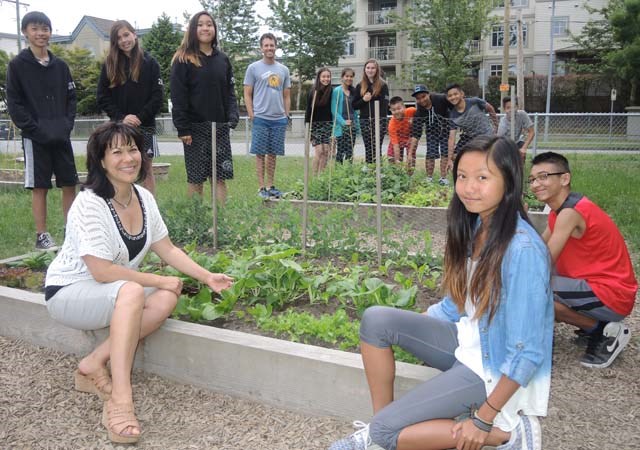It’s been three years in the making, but now a crop of Richmond elementary students is about to realize a dream to fully connect with their community.
Next Wednesday, June 10, the General Currie Earth Guardians will officially open the Currie Community Garden, a project planned and implemented, for the most part, by the kids themselves.
And while many schools in the district have their own vegetable patches for growing and learning, General Currie students will be sharing 15 boxes with local community gardeners.
Needless to say, having helped raise more than $11,000 to get the project off the ground and played a major role in its design, the students are heavily invested and are excited, as are their teachers, about the garden being fully functioning.
“It has always been an idea that we wanted to put into practice and when it surfaced again a few years ago, we decided to make it happen with the students’ help,” said Grade 6/7 teacher Mari-Jane Medenwaldt, who got the program off the ground along with colleague James Thesiger.
“We kind of put it into the hands of the kids; but it’s been a very long process to get to where we are now, and we really wanted it to be a grassroots thing from the students.
“Quite a few other schools have these, but the difference here is that we have involved the community that we are very much a part of.”
Most of the students were in Grade 4 when the project started in 2012, explained Medenwaldt, who originally hoped it would be done in one or two years.
“Trying to raise the money and dealing with several partners, it takes time,” she added.
In the early stages of planning, students asked questions such as, “Why do we need a garden?” “Who would use the garden?” “How does a garden effect the environment and “What might a garden look like?”
In the end, to share their designs and discoveries, the students held a “Garden Design Fair” that was open to the school and the local community.
They also entered a video in 2013 into the Science World Green games and won $1,000 towards the establishment of a school/community garden.
Staff also approached the PAC for support and, in the same year, secured $10,000 towards the garden’s development.
In 2014, teachers met with the City of Richmond, Richmond Food Security, the Richmond School District and the architectural plans for the garden were put into place.
By the spring of 2014, the first five boxes and toolsheds were in place and students planted for the first time. By the spring of 2015, Richmond Food Security allocated 10 more community beds and the garden has been seeded.
Surprisingly, very little, if anything, has been stolen from the open community garden, said Thesiger.
“If people are that hungry, they should take it and eat it, it’s food,” he said.
“But we actually had a ‘guerrilla planting’ of this random sunflower!
“We were about to relocate it when this woman ran up, claiming ownership and saying she thought it was OK to plant it there.”
Perhaps one of the reasons there has been little tampering of the garden, suggested, Thesiger, is the level of emotional and physical investment in the lots from the students and the community.
“It’s a huge factor. The students are not just connecting with each other while working on the garden, they’re connecting with the earth.
“Our big goal was to interact with the community; our school is immersed in the community. And, ironically, many of the students’ parents and grandparents come from farming families in the Philippines, China and Japan.”



